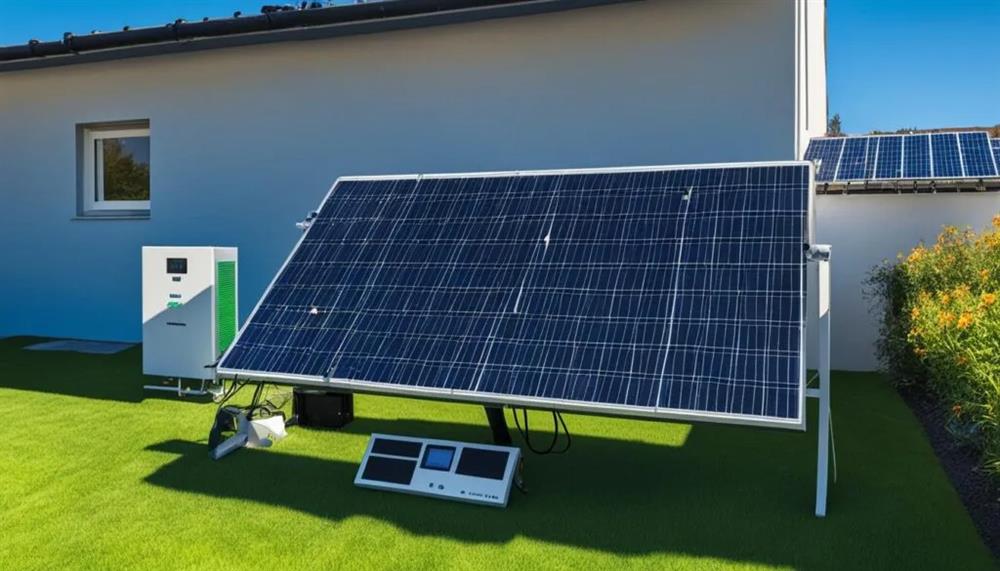How to Use Solar Panel Directly Without Battery?

Solar power is changing how we power things. For most people, some questions arise when you mention solar panels. Does electricity get straight from the solar panels without needing a battery? Yes, and to make this work requires you to have a good installation. So let's take electricity from the sunlight efficiently and enjoy free power during daylight hours
What Does It Mean to Use Solar Panels Without Battery?
The energy produced by sunlight powers your home in real time when you use solar panels without a battery. Without the need to store electricity, power flows straight from your panels and on into appliances throughout your dwelling. This sort of system will produce energy only when the sun shines, something for which it is well-suited.
How Solar Panels Work Without a Battery?
From sunset to sunrise, solar energy can power your home instantly without batteries. The process is simple and direct. You light up your house using sunlight-collector panels, let in a little electrical current to generate power for appliances. Here are the complete details.
Step 1: Sunlight Hits the Solar Panels
As the sun's light hits your solar panel, its photovoltaic cells are directly greeted by firing up. These cells suck in light and convert it into DC energy. The brighter rays come through the panel, and more power is available for use at night.
Step 2: DC Power Flows to the Inverter
The DC power produced on the panel heads off to an inverter through connecting wires. The inverter is a very important part of your system, converting DC power into a suitable form for your home by changing it to alternating current (AC). In the process, both safety and convenience are assured.
Step 3: Power Runs Household Devices Instantly
Once converted into AC, the power flows directly into your electrical system. Lights, fans, and small machines can operate smoothly using this solar-generated energy. It’s a direct and efficient process that doesn’t need any storage unit.
Step 4: Energy Stops When Sunlight Fades
Your power supply relies on the sun alone, since there are no batteries. If the sun goes down or clouds gather, then electrical generation will slow and even stop altogether. For this reason, most people connect their systems to the main grid system, allowing a constant supply of power.
Step 5: Clean and Simple Energy Flow
This battery-free setup makes solar energy straightforward and eco-friendly. There’s no storage loss, no battery maintenance, and no extra cost. It’s a clean, real-time power solution ideal for grid-tied solar users.
Where Can You Use Solar Without Battery
This setup is perfect for houses, shops and offices connected to the main grid. Moreover, it can also be used to realize garden lighting solar water pumping system that only works in days or irrigation systems of the kind that operate only in daylight. It's a practical method to cut down on electricity bills when the sun shines.
Best Way to Set Up Solar Panels Without Battery
Yes, but it depends on your inverter's capacity and the type of appliance. Smaller devices such as fans, televisions and lights are easily driven; however, large appliances need stable voltage in addition to enough watts. To avoid an overflowing system,you should always match the size of your inverter with the amount of energy your work requires.
Can I Run Appliances Directly on Solar Panels
Yes, but this depends on the power of your inverter and what kind of appliances you are using. Small things such as fans, televisions and lights will run quite easily, while white goods require a steady voltage and enough watts to support their operation. The inverter size must always match your load size if you don't want the system to be overloaded and thereby get smooth performance in operation.
Step-by-Step Guide to Using Solar Panels Without a Battery
In this section, I will show you how to set up your solar system using no batteries at all. Follow these simple steps, and soon the sun will be in charge of your power.
Step 1: Select the Right Solar Panel
Pick great-planning panels that generate consistent production even in limited sunlight. A good panel will ensure smooth and continuous current flow. Be confident to verify the panel’s quantification and similarity before installation.
Step 2: Install a Grid-Tied Inverter
Use a verified inverter that matches your system’s size. It changes raw AC electrical power from the panels into instan,t safe DC power. A quality inverter also includes features for safety to keep the bus stable.
Step 3: Connect to the Electrical Grid
Your installer will connect the inverter to your main electricity line. This connection allows unused energy to flow back into the grid. It’s a clean exchange that helps balance your power usage efficiently.
Step 4: Test the System
Once installed, test your solar system under full sunlight. Turn on a few devices and observe the performance. If the voltage remains stable, your setup is ready for regular use.
Step 5: Monitor Output
Use a monitoring app or digital meter to track your daily solar production. It helps you understand energy usage and detect any drop in panel performance early. Consistent observation secures long-term reliability.
Where to Buy Solar Panels and Inverters
Gazing for good solar panels and accessories? Look no further than MWEL.ie, Ireland, trusted source for all of your solar equipment and more. MWEL provides pure panels, inverters, and completed solar kits for households and businesses alike. Our Warehousing and Logistics Department tests all products for quality and efficiency, so you can be sure you'll not regret this purchase!
Conclusion
If you purchase a system that is two or three times larger than needed, it will keep generating power and pay for its extra cost with savings in the future. It reduces CO2 emissions, indirectly alleviates air pollution, as well as greenhouse effects caused by the urban heat island effect. Moreover, China's regions can charge for electricity at a lower price than the national capital region.
FAQ’s
Q1: Can you use Solar panels without an Inverter?
When sunlight hits the solar panel, it immediately converts this DC power into AC electricity. And this is impossible to use in machines or lights still connected to the grid--unless you have an inverter.
Q2. Is it cheaper to use solar panels without batteries?
Yes. As you save on battery cost, maintenance, and replacement expenses, it is more economical.
Q3: What happens at night when I use Solar without battery?
Your panel stops producing power, and after sunset, your system is on grid electricity.
Q4: Can I add batteries to my solar system later?
Yes, particularly if you have a hybrid inverter and a compatible battery pack installed.
Q5: Which is better, solar with or without battery?
If you only require power in the daytime, go without batteries. However, if you want power backup at night, then select a hybrid or off-grid setup.





